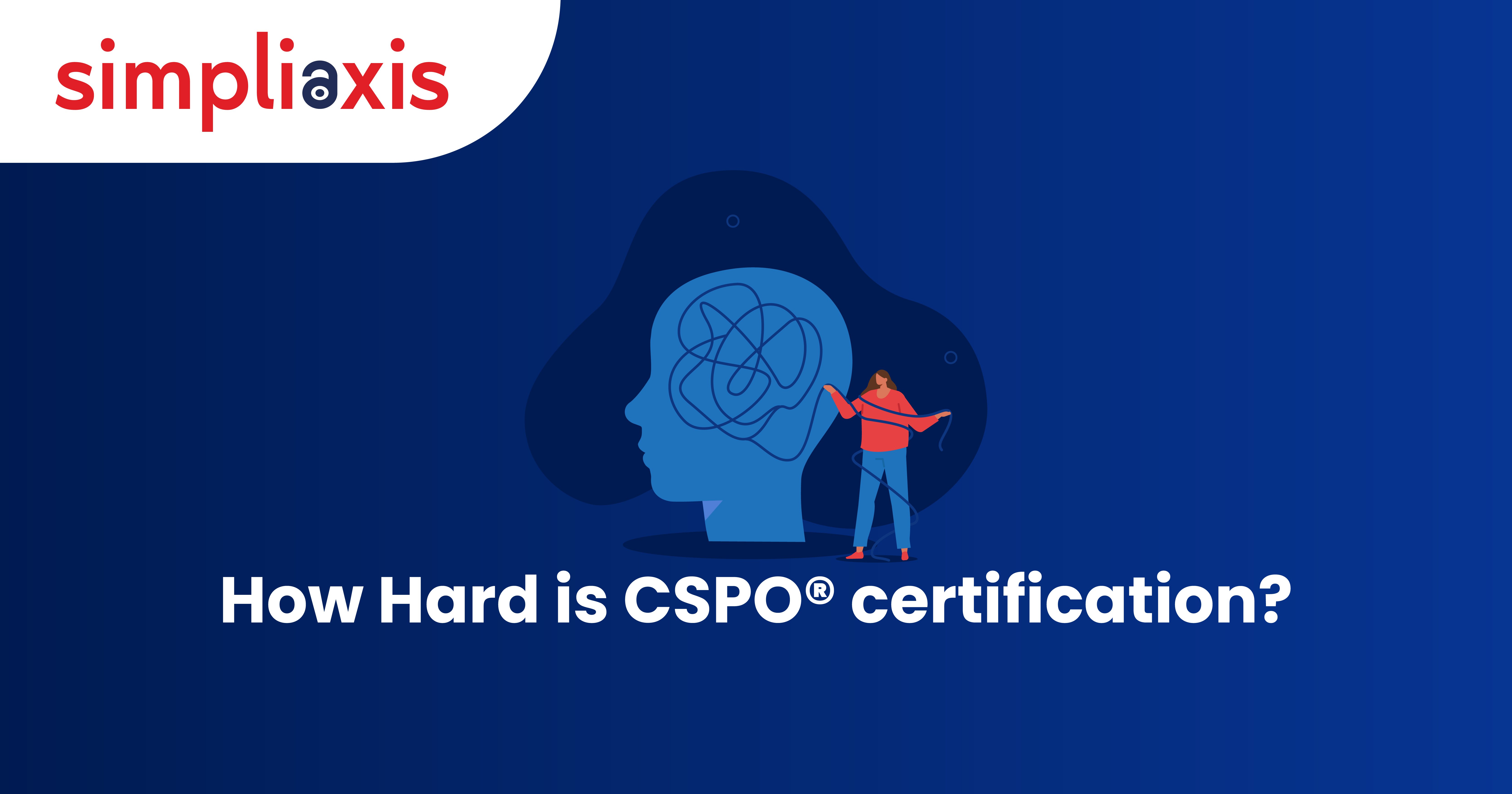Certified Scrum Product Owner® (CSPO) certification is a valuable credential for professionals looking to excel in the field of Agile and Scrum project management. It demonstrates your knowledge and proficiency in product ownership within the Scrum framework. However, many individuals wonder just how difficult it is to obtain the CSPO® certification.
In this article, we will explore the CSPO® certification process, discuss its difficulty level, and provide tips on how to succeed in the exam.
Understanding the CSPO® certification
Before delving into the difficulty level, let's first understand what CSPO® certification entails.
The Certified Scrum Product Owner® (CSPO) certification is offered by the Scrum Alliance, one of the most prominent organizations in the Agile community. The CSPO® certification focuses on the role of the Product Owner in Scrum, a pivotal position responsible for defining, prioritizing, and delivering valuable features and products.
To obtain the CSPO® certification, you will have to attend a two-day training course conducted by a professional Scrum trainer and pass the exam. The training covers various aspects of Scrum, Agile, and the specific responsibilities of a Product Owner within the Scrum framework.
Embark on your CSPO® certification journey with our comprehensive training programs. Learn from experts and take the first step towards becoming a certified Scrum Product Owner.
The Difficulty Level of CSPO® Certification
The difficulty of the CSPO® certification can vary from person to person. Factors that influence the difficulty level include your prior experience, the quality of the training you receive, and your commitment to mastering the concepts. The difficulty level of the CSPO® certification is relatively moderate compared to some other certifications in the field. However, the real challenge lies in applying the principles and practices learned during the course effectively in a professional setting.
It is essential to continue learning and adapting to the changing landscape of Agile and Scrum to succeed as a Certified Scrum Product Owner. With dedication, practice, and a commitment to Agile principles, individuals can achieve this certification and thrive in their roles as Product Owners.
Key Features of CSPO® certification
Feature | Description |
2-Day Extensive Training | A comprehensive two-day training course. |
16 PDUs and SEUs | Earn 16 Professional Development Units (PDUs) and Scrum Education Units (SEUs). |
Delivered by Certified Scrum Trainer | Instructors are certified professionals with in-depth knowledge. |
Global Recognition | The certification is recognized worldwide in the Agile community. |
Interactive Workshops | Engage in hands-on workshops to reinforce learning. |
Comprehensive Curriculum | Cover a wide range of topics related to Scrum and product ownership. |
Mastery of Agile Product Ownership | Develop expertise in Agile product ownership practices. |
Factors Affecting Difficulty Level of CSPO® Certification
1. Prior Agile/Scrum Experience: If you have prior experience with Agile and Scrum, you may find some concepts easier to grasp. Experience in a Scrum team or as a Product Owner can significantly reduce the difficulty of the CSPO® certification.
2. Quality of Training: The quality of the training course you attend plays a crucial role in how difficult the certification process will be. A well-structured, informative training course can prepare you adequately for the exam.
3. Commitment and Study Effort: Like any certification, your commitment and effort in studying the materials, understanding Scrum principles, and preparing for the exam will have a substantial impact on the difficulty level.
Have questions or need personalized guidance on your CSPO® certification journey? Don't hesitate to reach out to our certified Scrum experts. We're here to support your success.
Tips for Success in CSPO® Certification
Here are some tips to help you succeed in your CSPO® Certification journey:
1. Attend a High-Quality Training Course: Choose a CSPO training course led by an experienced and certified Scrum trainer. This will ensure you receive the best education and insights into Scrum and Product Ownership.
2. Read Scrum and Agile Resources: Supplement your training with books, articles, and blogs about Scrum and Agile. Books like "Scrum: The Art of Doing Twice the Work in Half the Time" by Jeff Sutherland and "Agile Estimating and Planning" by Mike Cohn can be particularly helpful.
3. Join a Scrum Community: Engaging with a Scrum community can provide support and insights from experienced professionals. It's a great way to learn from others and share your knowledge.
4. Practice with Real-World Scenarios: Apply your knowledge in real-world scenarios, whether within your organization or through side projects. Practical experience is invaluable.
5. Take Practice Exams: Many CSPO training providers offer practice exams. These can help you become familiar with the exam format and the types of questions you'll encounter.
6. Stay Updated on Scrum Trends: The Agile landscape is constantly evolving. Stay updated on the latest trends and best practices within the Scrum framework.
Lastly!
The difficulty of obtaining the Certified Scrum Product Owner® (CSPO) certification varies from person to person and depends on factors such as prior experience, training quality, and individual effort. While it may not be an easy certification to obtain, with the right training, resources, and commitment, it is achievable for those who aspire to excel in the field of Agile and Scrum project management.
Whether you're new to Scrum or an experienced practitioner, the CSPO® certification is an excellent way to demonstrate your expertise as a Product Owner within the Scrum framework. So, don't be discouraged by its difficulty; instead, use it as an opportunity to learn, grow, and advance in your Agile career.
Waste no time in embarking on your CSPO® certification path. Enroll in a CSPO training courseand uncover the exciting opportunities that lie ahead in the realm of Agile product ownership. Your journey begins now!
















